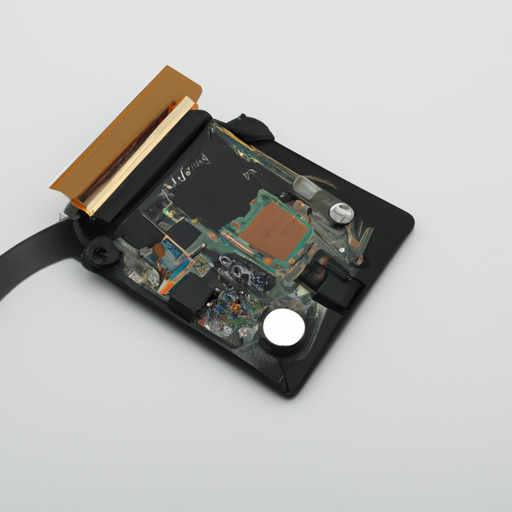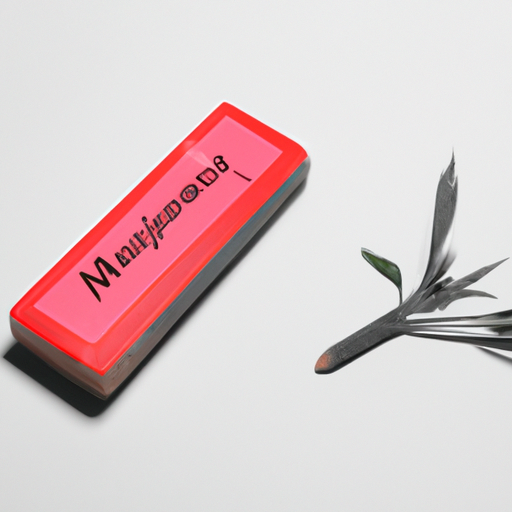What are the common production processes of CFR-50JB-52-1R6?
What are the common production processes of CFR-50JB-52-1R6?
The CFR-50JB-52-1R6 resistor undergoes rigorous manufacturing to ensure reliability. It complies with AEC-Q200, a standard that tests components under extreme conditions for automotive use. Its applications span industries, including general electronics, industrial equipment, and automotive systems. These common production processes guarantee performance and durability across diverse environments.
| Application Area |
|--------------------------|
| General electronics |
| Industrial equipment |
| Automotive applications |
| Consumer electronics |
> AEC-Q200 certification ensures the resistor withstands severe conditions, making it ideal for critical applications.
Key Takeaways
- The CFR-50JB-52-1R6 resistor is strong and reliable. It meets AEC-Q200 rules, making it great for cars and factories.
- Strong materials like ceramic rods and carbon film make it last longer. These materials also help it work well in different places.
- Careful steps, like adding carbon film and cutting it exactly, keep resistance steady. This also reduces noise and makes it dependable for important uses.
Material Selection and Preparation
### Materials Used in CFR-50JB-52-1R6
The CFR-50JB-52-1R6 resistor relies on high-quality materials to ensure durability and performance. Ceramic rods form the core of the resistor due to their excellent insulating properties and mechanical strength. These rods provide a stable base for the carbon film, which is the primary resistive element. The carbon film, made from a blend of carbon and polymer binders, offers precise resistance values and temperature tolerance. Additional materials, such as metal caps and lead wires, are used to facilitate electrical connections and mounting.
Ceramic rods are particularly advantageous in resistor production. They exhibit wear and corrosion resistance, ensuring a long service life in harsh environments. Their high stability and strength contribute to consistent performance, while their ease of processing allows manufacturers to achieve precise dimensions. The table below highlights these benefits:
| Advantage | Description |
|---------------------------------|-----------------------------------------------------------------------------|
| Good wear and corrosion resistance | Ceramic rods maintain a long service life in harsh environments. |
| High stability | They exhibit high hardness and strength, providing stable performance. |
| Ease of processing | Easier to cut into required sizes compared to metals. |
| Good safety performance | Being insulating materials, they are widely used in electrical equipment. |
Preparation of Ceramic Rods and Carbon Film
The preparation of ceramic rods involves several meticulous steps to ensure they meet the required specifications. These steps include:
1. **Material Preparation**: Ceramic paste is shaped into rods using extrusion or molding techniques.
2. **Drying Process**: The rods are dried to remove moisture and solvents, preventing defects like cracking or warping.
3. **Firing (Sintering)**: High-temperature kilns bond the ceramic particles and eliminate organic binders.
4. **Post-Processing**: Grinding and polishing enhance the surface finish and dimensional accuracy.
5. **Quality Inspection**: Final rods undergo inspection to ensure they meet the necessary standards.
The carbon film is prepared by blending carbon with polymer binders to achieve the desired resistive properties. This film is later applied to the ceramic rods during the coating process, a critical step in the common production processes of the CFR-50JB-52-1R6.
Core Manufacturing Processes
### Carbon Film Coating on Ceramic Rods
The carbon film coating process is a critical step in the production of the CFR-50JB-52-1R6 resistor. Manufacturers apply a thin layer of carbon film onto the ceramic rods using a vacuum deposition technique. This method ensures uniformity and precision, which are essential for achieving the desired resistance values. The carbon film's technical specifications, such as tolerance levels and temperature response, play a significant role in the resistor's performance.
| Specification | Details |
|------------------------------|----------------------------------------------|
| Tolerance Levels | ±2%, ±5%, ±10%, ±20% |
| Resistance Range | < 1 Ohm to 10 Megohms |
| Longevity | 2% resistance drift after 1000 hours |
| Noise Level | 20 µV/V average noise level |
| Temperature Response | ±200 ppm/°C to over ±1500 ppm/°C |
| Voltage Sensitivity | 0.0005%/V |
| Maximum Operating Temperature | Up to 150°C |
The uniform carbon film ensures consistent resistance and minimizes noise, making the resistor suitable for various applications, including automotive and industrial systems.
Precision Bidirectional Cutting
After coating, the ceramic rods undergo precision bidirectional cutting to achieve the required dimensions. This process uses advanced machinery to ensure accuracy and consistency. The cutting process not only determines the resistor's size but also influences its electrical properties. Proper cutting minimizes defects and ensures the resistor meets industry standards. The precision achieved during this step is vital for maintaining the resistor's reliability and performance in demanding environments.
Through-Hole Mounting Preparation
Preparing the resistor for through-hole mounting involves several techniques to ensure compatibility with circuit boards. One common method is the ZI-form technique, which allows the resistor to be soldered similarly to surface-mounted components. For high-voltage applications, manufacturers often use multiple resistors in series to enhance performance and safety. These preparation techniques ensure the resistor integrates seamlessly into various electronic systems, meeting the needs of diverse applications.
> Proper preparation for through-hole mounting enhances the resistor's versatility and ensures reliable performance in different configurations.
Quality Control and Testing
### Inspection of Carbon Film and Ceramic Rods
The inspection process ensures the carbon film and ceramic rods meet the required specifications for durability and performance. Manufacturers use advanced imaging techniques to detect surface defects, such as cracks or uneven coatings. These inspections verify the uniformity of the carbon film, which directly impacts the resistor's resistance values and noise levels. Ceramic rods undergo dimensional checks to confirm their size and shape align with design requirements. This meticulous inspection process guarantees the components' reliability in various applications.
Functional Testing for Resistance and Temperature Tolerance
Functional testing evaluates the resistor's performance under different conditions. Engineers test parameters such as power ratings, nominal power dissipation, and temperature coefficient of resistance. These tests ensure the resistor maintains its specified resistance and tolerates temperature fluctuations. Additional parameters include:
- Impulse strength
- Limiting voltage and current
- Insulation strength
These tests confirm the resistor's ability to perform reliably in demanding environments, such as automotive and industrial systems. Functional testing is a critical step in the common production processes of the CFR-50JB-52-1R6.
Compliance with AEC-Q200 Standards
Compliance with AEC-Q200 standards enhances the resistor's reliability, especially in automotive applications. These standards require rigorous testing under severe conditions, ensuring the resistor withstands extreme temperatures and mechanical stress. The table below outlines the temperature ranges and typical uses for each grade:
| Grade | Temperature Range | Typical Use |
|-------|-------------------|-----------------------------------------------|
| 0 | -50°C to +150°C | Every mounting part |
| 1 | -40°C to +125°C | Most of the engine room |
| 2 | -40°C to +105°C | High-temperature area of the passenger room |
| 3 | -40°C to +85°C | Most of the passenger room |
| 4 | 0°C to +70°C | A place for mounting non-electrical equipment|
By adhering to these standards, the CFR-50JB-52-1R6 achieves exceptional reliability, making it suitable for critical applications.
Packaging and Finalization
### Packaging for Protection and Transport
Packaging plays a crucial role in safeguarding the CFR-50JB-52-1R6 resistor during storage and transportation. Manufacturers use anti-static materials to prevent damage caused by electrostatic discharge. These materials include bubble wraps, foam inserts, and sealed plastic bags. For bulk shipments, resistors are often placed in compartmentalized trays or reels to prevent movement and minimize physical impact. The packaging design ensures that each resistor remains intact and free from contamination, preserving its functionality until it reaches the end user.
To further enhance protection, manufacturers label the packaging with handling instructions. Labels such as "Fragile" or "Keep Dry" guide logistics teams in maintaining optimal conditions during transit. This attention to detail ensures the resistor's reliability upon delivery.
Labeling and Documentation for Traceability
Accurate labeling and documentation are essential for traceability in the production and distribution of the CFR-50JB-52-1R6. Each resistor package includes critical information, such as the manufacturer's name, production location, and batch number. These details allow customers to trace the product's origin and verify its authenticity. For specialized industries, additional labeling requirements may apply. For example:
- Medical devices require the inclusion of a Unique Device Identifier (UDI).
- Children's products must display the production date and batch number.
- Textiles often include fiber composition and care instructions.
This comprehensive labeling system ensures compliance with industry regulations and facilitates efficient inventory management.
Distribution Readiness
Before distribution, manufacturers conduct a final inspection to confirm that the resistors meet all quality and packaging standards. Once approved, the products are organized into shipping units based on customer orders. Logistics teams optimize the packaging layout to maximize space efficiency while maintaining product safety. For international shipments, manufacturers ensure compliance with export regulations and provide necessary documentation, such as certificates of conformity.
The readiness for distribution reflects the culmination of the resistor's common production processes. By prioritizing quality and precision at every stage, manufacturers deliver a product that meets the demands of diverse applications.
The production of the CFR-50JB-52-1R6 resistor demonstrates the importance of precision and advanced techniques in manufacturing. Processes like carbon film coating and precision cutting enhance performance by ensuring stability across temperatures and reducing noise levels. These resistors meet industry standards, making them reliable for applications in electronics, automotive systems, and industrial equipment.
| Feature | Details |
|-----------------------------|----------------------------------|
| Manufacturer Part Number | CFR-50JB-52-20R |
| Resistance (Ohms) | 20 |
| Power (Watts) | 0.5W, 1/2W |
| Tolerance | ±5% |
| Temperature Coefficient | -350/ +500ppm/°C |
| Operating Temperature Range | -55°C ~ 155°C |
| Composition | Carbon Film |
| Key Application Areas | General electronics, Industrial equipment, Automotive applications, Consumer electronics |
> The helical cut in the carbon film allows precise resistance adjustments, ensuring high performance in critical applications.
FAQ
### What makes the CFR-50JB-52-1R6 suitable for automotive applications?
The CFR-50JB-52-1R6 meets AEC-Q200 standards, ensuring durability under extreme conditions. Its high-temperature tolerance and resistance stability make it ideal for automotive systems.
How does the carbon film coating improve resistor performance?
The carbon film coating ensures uniform resistance and minimizes noise. This precision enhances the resistor's reliability, especially in applications requiring stable performance across varying temperatures.
Why is traceability important in resistor production?
Traceability ensures product authenticity and compliance with industry standards. It allows manufacturers and customers to verify production details, improving quality control and inventory management.
> **Tip**: Always check for proper labeling and documentation when sourcing resistors for critical applications.







